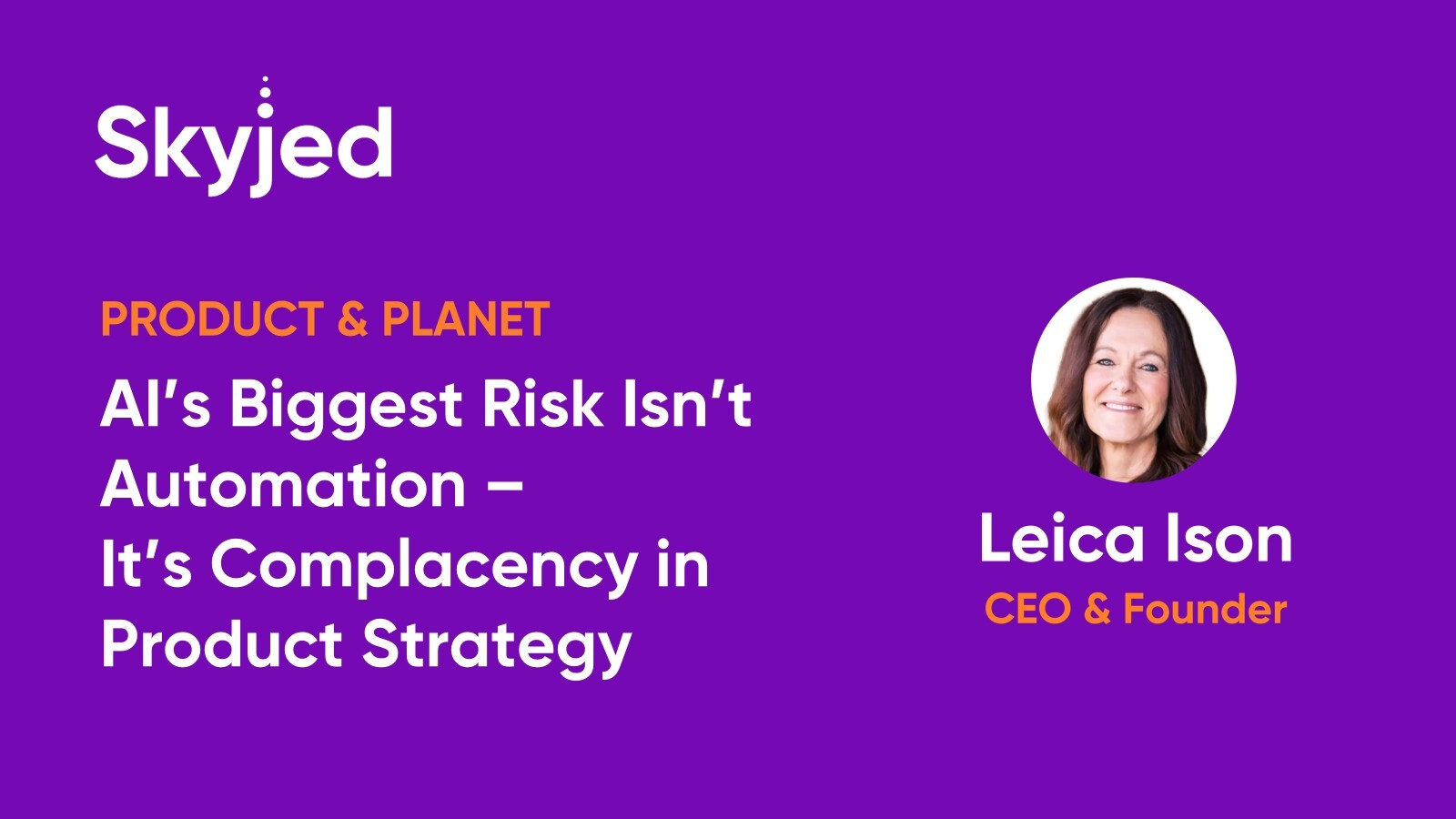AI’s Biggest Risk Isn’t Automation – It’s Complacency in Product Strategy
by Leica Ison

As I witness the rapid rise of AI in my own business and its transformative impact across industries, I see a growing risk: businesses might miss the point entirely.
The biggest risk today isn't AI taking over jobs, it's that product teams are trapped in a 'washing machine of busy roadmap releases,' churning out features without pausing to strategically assess the shifting landscape. They're so focused on delivering against immediate roadmaps that they fail to build high-conviction growth strategies founded on solid lifecycle principles.
In a time where machine learning (ML) lifecycles are evolving at an unprecedented pace, Board members, executives, and leaders face this question: How can we secure long-term success when the very lifecycles and business models that once anchored our revenue streams are now being disrupted before our eyes?
We need to shift from a reactive, feature-focused approach to a strategic, lifecycle-driven one, where we proactively anticipate and respond to market shifts, ensuring our products and businesses remain relevant and resilient.The Shifting Landscape of AI and Business Models
AI is changing the speed at which businesses must adapt. What worked yesterday—our steady revenue streams, traditional business models, and long product lifecycles—is no longer enough. Technology is evolving so rapidly that even the largest and most successful companies are beginning to question the reliability of their current annual strategies. The tech shifts we’re experiencing today aren’t minor—they’re foundational.
This rapid pace of change means that lifecycles are shorter, innovation cycles are more intense, and growth strategies must be far more nimble. To stay ahead, companies need to rethink their product strategies entirely and monitor monthly and review every 90 days. The focus should no longer be solely on feature sets or high-growth tactics that are driven by the assumption that today’s success will last forever
Lifecycle Governance: A New Foundation for Strategic Innovation
The key to staying competitive in this new world isn’t just about launching new features every month or quarter—it’s about having the foresight to understand where your business needs to be in 3 to 5 years. And more importantly, how AI can be embedded into your business to accelerate that vision and value for your customers.
This is where lifecycle governance becomes indispensable. It provides the transparency needed to track disruption and the agility to capitalise on emerging opportunities.
When done right, lifecycle governance helps you manage the entire product journey—from ideation to deployment AND sunsetting —while also giving you a way to anticipate and react to shifts in the market or technology landscape.
With this approach, AI is no longer just a buzzword or a collection of shiny features. It becomes a strategic lever that you can embed deeply into the core of your business, creating new avenues for differentiation, and ultimately, for sustainable growth.
The Importance of Managing Lifecycle Risk
But here's the catch: executing a strategy based on technological shifts requires more than just vision and a annual plan. It requires risk management. AI implementation must be guided by strong governance, which helps establish the guardrails for what can and can’t be done, ensuring alignment between product development and overall business goals.
Lifecycle management and governance give leaders a roadmap to monitor the leading indicators of success—whether it's revenue growth, customer retention, or product adoption. It ensures that strategic innovations aren’t just speculative ideas but well-calculated moves, backed by data and clear risk mitigation tactics.
Without this structure, businesses run the risk of chasing the next big thing without understanding the potential impact on the long-term sustainability of their product or service offering. This lack of visibility can quickly derail the entire product strategy, especially in the volatile world of AI.
Building the Product Lifecycle Strategy for the Future
True product strategy in the AI era isn’t about simply mapping out features on a roadmap—it’s about understanding where you want to be in 3 to 5 years. It’s about anticipating the tech shifts, embedding lifecycle management and governance as a core component of your business, and using it to strengthen your product offering in a way that strengthens your position in the market.
This level of strategic foresight requires a robust lifecycle governance framework. By identifying leading indicators of both risk and opportunity, governance helps companies make data-driven decisions, manage change proactively, and drive innovation in ways that set them apart from your competitors
Lifecycles, Governance, and the Future of AI
Lifecycle management with governance guardrails built in is the backbone of that strategy, offering the transparency, agility, and foresight to ensure that AI becomes a tool for lasting success, not just a passing trend.
The future belongs to businesses that can adapt, govern, and innovate in a way that allows them to stay ahead of disruption while maintaining a clear vision for where they want to be. I've seen firsthand with our Skyjed clients the power of this approach, and I'm passionate about helping others navigate this transformative era. If you're grappling with these challenges, I'd love to connect and discuss how we can build a more resilience with lifecycle governance.
Please reach out, and until next edition.
Leica
Contact Skyjed today for a personalised demonstration.
About Skyjed
Watch our 30 second Skyjed Overview video here
Skyjed’s AI-powered end-to-end lifecycle and governance platform is mission control for lifecycle management and governance. Bringing together every data point across your portfolio and lifecycle into a single source of truth, it gives our clients a new perspective to make more strategic lifecycle decisions to launch, monitor, optimise, and win.
Our industry-leading platform has received numerous awards and recognition from clients and industry bodies, demonstrating our commitment to innovation and excellence.




